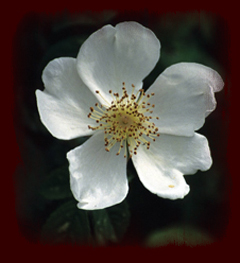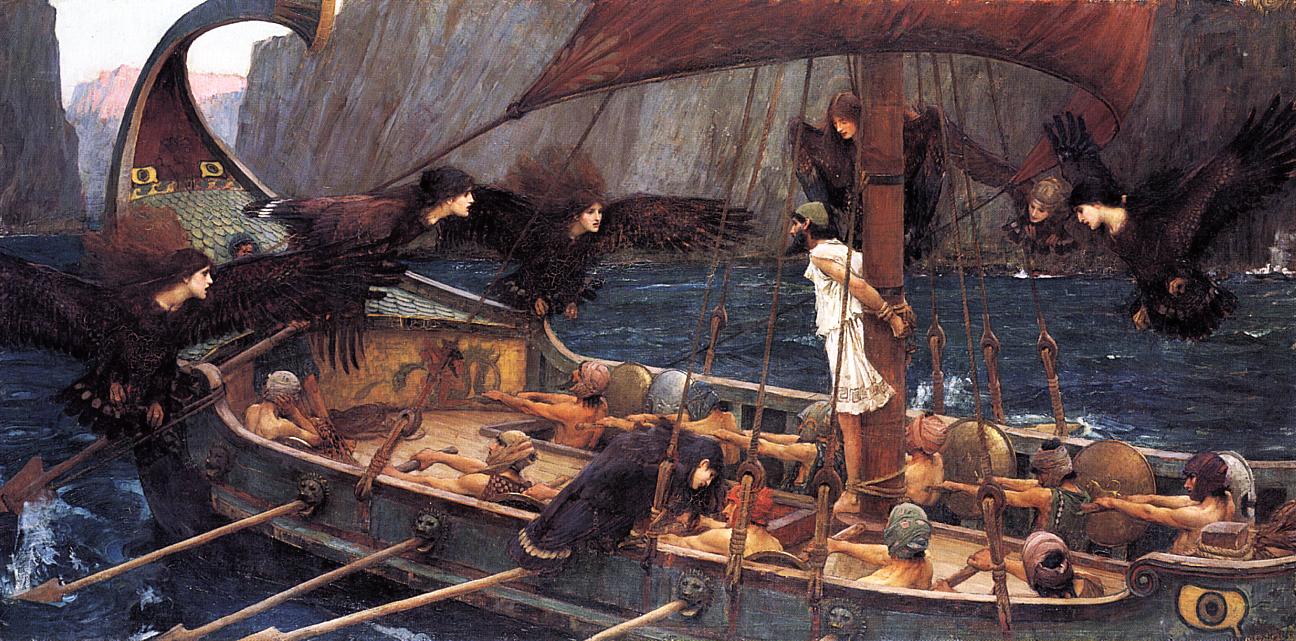
CLAN OF TUBAL CAIN

Siren Song ---quid Sirenes cantare sint solitae? |
“The sons of man, and even the spirits and demons, went astray after her…. She is alive to this day, and her dwelling is among the waves of the Great Sea.” Zohar3, 76b-77a Robert Graves, that inspired and inspirational poet of the last century, to whom many owe a debt of gratitude, opened his landmark study The White Goddess by reiterating some questions attributed to Dr Thomas Browne, but more correctly from Suetonius(i) “What songs the siren sang?” is one of those questions. Beginning the epic voyage that such a puzzle requires means we must equip ourselves in order to navigate the mythic landscape with a well constructed myth-faring vessel. With a keen ear to the wind, and with the poet cartographer mapping the terrain before us, only then may we set a course to enquire “what songs the siren sang”. The most common image of the three sirens emerges from Homer’s epic poem the Odyssey, which relates the return voyage of the King of Ithaca after the long siege of Troy. After spending a year with the witch-Goddess Circe, Odysseus is given the crucial instructions for the final leg of his journey, including the dangers of the island of the sirens, Sirenum Scopuli. The caution Odysseus receives from Circe is simply to skirt the island and to avoid the song of the bird-women for it is so alluring that no man could resist. The same caution is given to Jason on his return journey with the Golden Fleece aboard his ship the Argo. Jason, however, is fortunate enough to have onboard Orpheus, who strikes up such a melody on his lyre that the song of the sirens is drowned out. Indeed, Graves also asserts that the nine muses were successful when competing with the three sirens. Nevertheless, the sirens are reputed to whistle up such music as would cause a man to throw himself into the sea and perish. The image called to mind is of our hero, Odysseus (iii), adrift in his ocean-going vessel, the wind in his foursquare sail, steering a course home. Already the winds have thrown him off course when Ithaca was in sight, but now he attempts to harness them as they thrust him ever onwards toward his destiny. Curious to hear the song of the siren without perishing, Odysseus bids his companion crew to bind him to the ship’s mast, pointing skyward and trapping the wind in the folds of the sail. Tied against the pole, Odysseus feels every movement of the ship upon the Great Sea, the impact of each wave of the seven seas as it smashes against the vessel while the harsh rays of the sun beat down and the wind lashes against his skin. He feels every punishing force of the elements in turn to hear the siren song and endure the torment and pleasure it brings to the hearts of men. Forewarned of the fate of those who submit to the siren’s call, Odysseus cannot help but desire a glimpse of that which no soul can resist. Odysseus, then, like Woden sacrificing himself upon the trunk of the world tree, fixes himself upon the sail mast to endure the song of the siren. The sirens are depicted in medieval bestiaries as having the legs and feet of birds, usually identified as owls. They are associated with the sea and are described as alluring sailors to them and singing them to sleep before devouring their flesh. In the 7th Century, Isidore of Seville wrote “…sirens have wings and claws because Love flies and wounds; they stay in water because a wave created Venus.”(vi) Here, Isidore has made the association of sirens with songs of love, which lure men by lust and desire, while connecting them with Aphrodite (Venus) who was born of the sea foam created after the castration of Cronus. Isidore continues: “…they were actually prostitutes who led travellers into poverty”. The Biblical accounts of certain she-demons are similar in form to the Greek sirens. Na’amah, sister of Tubal-Cain, is accredited with beauty and mastery of song. Like the sirens, she resides in the sea and makes music that lures men: “…her dwelling is among the breakers of the great sea, and she goes out and makes sport with men, warming herself on them in dreams with human desire…”. Biblical descriptions, particularly Isaiah, make use of the image of the screech or desert owl that most frequently is translated to denote Na’amah’s twin she-demon, sometimes a mother spirit, Lilith. One of the most famous depictions of Lilith has her with the wings and feet of an owl in an almost identical appearance to another showing a Greek siren. Several passages in the Septuagint, six in particular, make reference to owls or ostriches, making use of Greek words that early Christians translated as ‘Sirens’ and ‘Lilith’. The most frequently quoted passage of Old Testament texts that identify Lilith is Isaiah 34:14 where the word sometimes translated as ‘screech owl’ is related to Lilith, whose name means both night and wind. “The wild beasts of the desert shall also meet with the wild beasts of the island, and the satyr shall cry to his fellow; the screech owl also shall rest there, and find for herself a place of rest.” Isaiah 34:14 To the Native American plains people, especially the Oglala, the owl is held as an important totem animal of the soul. “It is the owl who outranks all the other birds because of his power of sight in the darkness”. Indeed, the night vision of the owl is considered comparable to the ‘sight’ or oneiric vision. To have clear perception is to ‘see’ as the owl of the night: “Little Warrior (Ozuye Jigala), who died in 1952… said he was able, in the darkness in which his ceremonies took place, to find lost objects through his owl ‘spirit helper’.(viii) ” A fundamental practice among the Oglala plains Indians is the ‘vision quest’, whereby the initiate goes out alone, pays homage to the four winds and the whirlwind, and undertakes a lone vigil. According to the Oglala ‘medicine man’ Black Elk, “Every man can cry for a vision, or ‘lament’, and in the old days we all – men and women – lamented all the time”(ix). Perhaps the most famous of the Amerindian ceremonies, undertook by the Oglala among others, is the ‘Sun Dance’. During this ritual, too, there appears a symbol that is unmistakable: “In the ceremony prior to cutting the tree for the Sun Dance, men acted like wild animals… During the ceremony, the women uttered the shrill cry of the screech owl.”(x) The song of the siren is sometimes given as a high pitched whistle, perhaps evidenced in the screech owl epithet for Lilith and her demon kin, which includes Na’amah since both are said to lure man to their death with their beauty and song. The Targumim Genesis 4:22, Aramaic translations of the Hebrew Bible (spanning the second Temple Period to the Middle Ages), gives us a hint at the variety of the siren’s call: “And the sister of Tubal-Cain was Na’amah, the inventor of dirges and songs.” The Na’amah of Genesis is identified with the ‘Daughters of Men’ with whom the fallen angels had intercourse after being seduced by her beauty and song. As succubi, Na’amah and Lilith come in the night to fill the hearts of ‘Sons of Men’ with fire and passion, with their song enticing the soul with the sacred alchemy of the unio mystica to awaken it from slumber and bring forth a divine child that they will steal away and raise a demon. The Syriac Apocalypse of Baruch, believed to have been written around the early 2nd Century, provides a poetic summoning whereby the connection between Lilith/Na’amah and the sirens is confirmed: “I will call the Sirens from the sea, Again, the tone of the siren’s song is a sombre lament, although the theme is one of love or desire. The ‘siren song’ represents something tempting with its allure, while possessing a quality ultimately with mortal consequences. What love song has not contained within it the threat of the lament for the broken heart, just as the gift of life brings with it the inevitable promise of death. The pang of love, while rapturous in our hearts, also causes it to ache at separation and this is the affect of the siren. The Iynx, or Hekate’s ‘Wheel’, is a legendary theurgical device imitating the cosmic revolutions and emitting a pitched tone. The Magi is believed to have used a cord to revolve Hekate’s Iynx like a child’s spinning top, which produces a whistle; as the device loses or gains momentum through whipping, the pitch changes imitating a droning lament of an eerie quality. Iynges also refers to the wryneck, a bird that sometimes “was the name of daemon-like entities in the Chaldean system. ”(xii) The word ‘jinx’ is derived from iynx, which belongs to a family of woodpeckers, genus picidae. When disturbed in its nest, the wryneck imitates the serpent by rotating its neck with 180 degrees rotation and hissing. Indeed, some descriptions of Hekate’s Iynx perhaps showed the image of the bird and the resultant symbology incorporates easily into the myth of the sirens. “It is significant that the sirens… sometimes were compared to iynges because they shared with them an ability to… form a bond between invoker and invoked through sound…” (xiii) According to Ovid’s Metamorphosis, Book V, the sirens were companions of Persephone and their song calling to the spirit of the kore. Alternatively, the song is a dirge set up on account of the mother, Demeter, and the loss of Persephone to Hades, who contrives to take carnal mastery of her, sung during the dark winter months. Of course, during the spring Persephone ascends to join with the magna mater, the single source, and resume her place in the heavens. Among Gnostic texts, Pistis Sophia cries out at the abuses of the ‘Self-Willed’ Archon, singing her repentance to the Light after falling through the Abyss into the realms of incarnation. “Save me, O God, for the waters are come even unto my soul. Here, the sea is the reflective surface, the mirror of the soul, through which Sophia descends into the netherworld. The lament of the feminine over that which has been lost beneath the waters also occurs in folklore, such as in the Frog Prince recorded by the Grimm brothers. Here the Princess sits beneath a tree near a pool tossing a golden orb in the air and catching it. Suddenly, she misses and drops the ball into the murky bottomless waters, following which the Princess immediately sets up a lament at her loss, summoning the frog-prince that will plumb the depths and retrieve the orb. The song of the sirens, then, is the lament of the soul at being separated from its source, the anima mundi. It is the pine for reunification, the unio mystica where a union of souls occur, an appeal to the heart of the hero who has bound himself to the vessel of the world upon the great sea of the cosmos. Ultimately, to hear the siren song is to feel the irresistible pull of the anima mundi playing the heart strings like the lyre of Orpheus. Such an encounter within the Odyssey of our own life is a lesson that the flesh may perish, but the pure soul will awaken from its slumber and endure with the anima mundi. Whilst we are advised against the wish to dive straight into the ocean in a suicidal bid to reach the island of the sirens, as one sailor did, we are reminded that the call of the siren’s is a beckoning of home; not the temporal Kingdom of Ithaca but the sacred isle to which Morgan le Fey and her company of songstresses escorted the wounded Arthur. In answer to the question, then, “What song the sirens sang”, we can offer the solution that it was the song of the soul, sung seductively by sirens, calling it back home. “And Uriel said unto me: ‘Here shall stand the angels who have lain with women… and those women whom they seduced shall become sirens.” First Book of Enoch, Chapter 19 Notes:------------------------------------------------- i) The Twelve Caesars, The Life of Tiberius, by Gaius Suetonius Tranquillus ii) The White Goddess, Robert Graves, Faber 2nd Edition, 1999 considered by the Romans a villainous falsifier whom they named “cruel Odysseus” (dirus Ulixes), Etymologies, Book 11, 3:30-31, Isidore of Seville iii) Etymologies, Book 12, 4:29, Isidore of Seville iv) Zohar 3, 76b-77a v) Animals of the Soul, Joseph Epes Brown, Element Books Ltd, 1998 vi) ibid. vii) ibid. viii) ibid. ix) Syriac Apocolypse of Baruch (II Baruch) x) Hekate Soteira, Sarah Iles Johnston, OUP USA, 1990 xi) ibid. xi) Psalm 69 |
